More fake aircraft are popping up at Russian bases in a crude attempt to fool Ukraine
Russia has a history of painting decoy military aircraft at its airbases around the country.
Analysts say the tactic is an attempt to mislead Ukraine when it carries out long-range attacks.
Both Moscow and Kyiv have used decoys to try and deceive the other side throughout the war.
Russia has a history of painting fake aircraft at its bases to try and fool Ukraine, and recent satellite imagery reveals that Moscow has extended this practice into the new year.
Deception continues to play a crucial role as the grinding war between Moscow and Kyiv nears the two-year mark. Both sides have made use of decoys in an attempt to trick the other. But Russia's aircraft paintings are unconvincing compared to inflatable models, for example.
A Jan. 11 image captured by Planet Labs PBC and obtained by Business Insider shows the silhouette of a warplane on the tarmac of Mozdok Air Base in southeast Russia. But unlike another aircraft that can be seen in the photo, the silhouette appears in a ghostly shade of white and doesn't cast a shadow.
That silhouette is missing in an image of the same base taken more than six months earlier, on June 21.
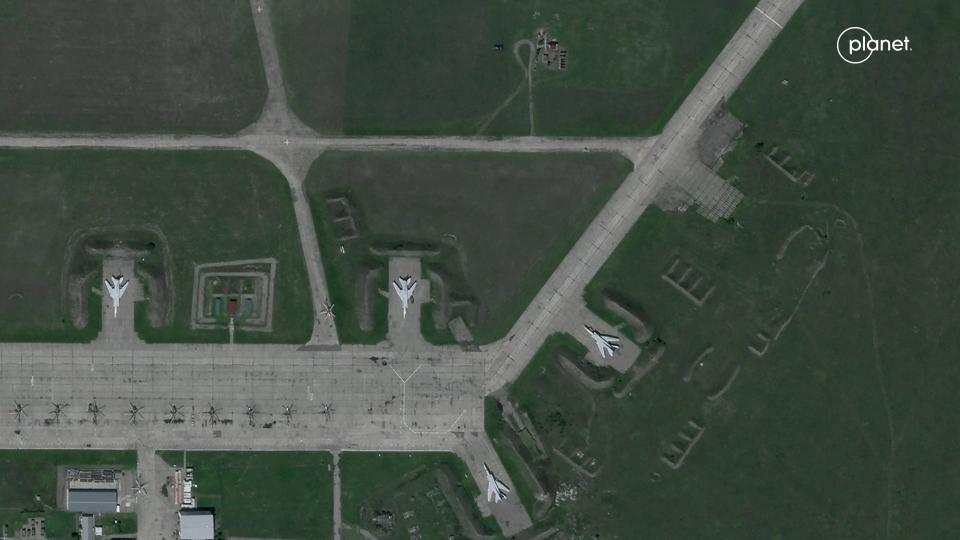
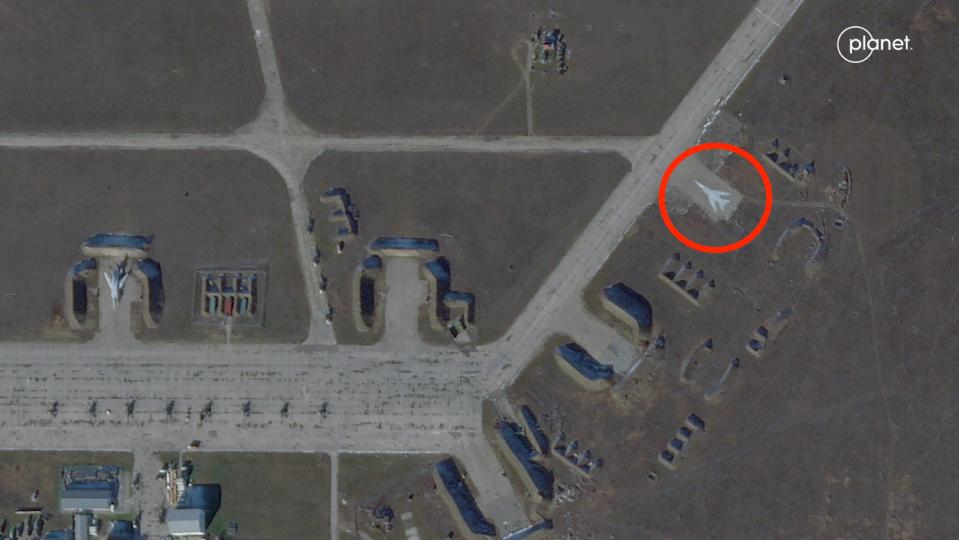
Mozdok is not the only Russian airfield where this practice has popped up in recent months; satellite imagery has captured mural-like warplanes at multiple bases around the country, and also throughout the occupied Crimean peninsula.
Not far from Mozdok in southwest Russia is the Krymsk Air Base not far from the Kerch Strait bridge that connects Crimea with Russia. A Nov. 10 satellite image reveals the silhouettes of four fighter jets that are painted in a bright shade of white and lack shadows, unlike other aircraft parked nearby. These silhouettes are missing in an Oct. 11 image of the same base.
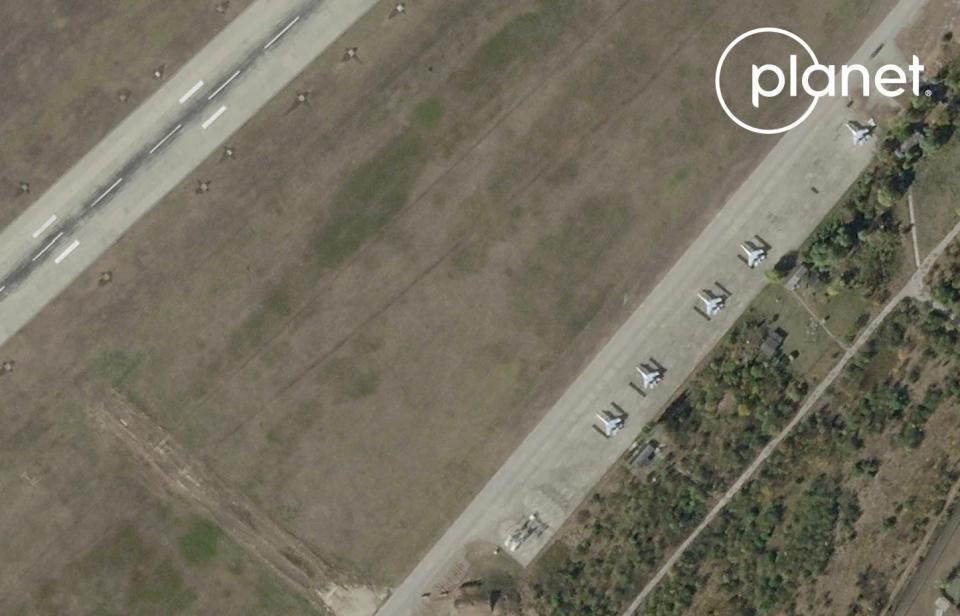
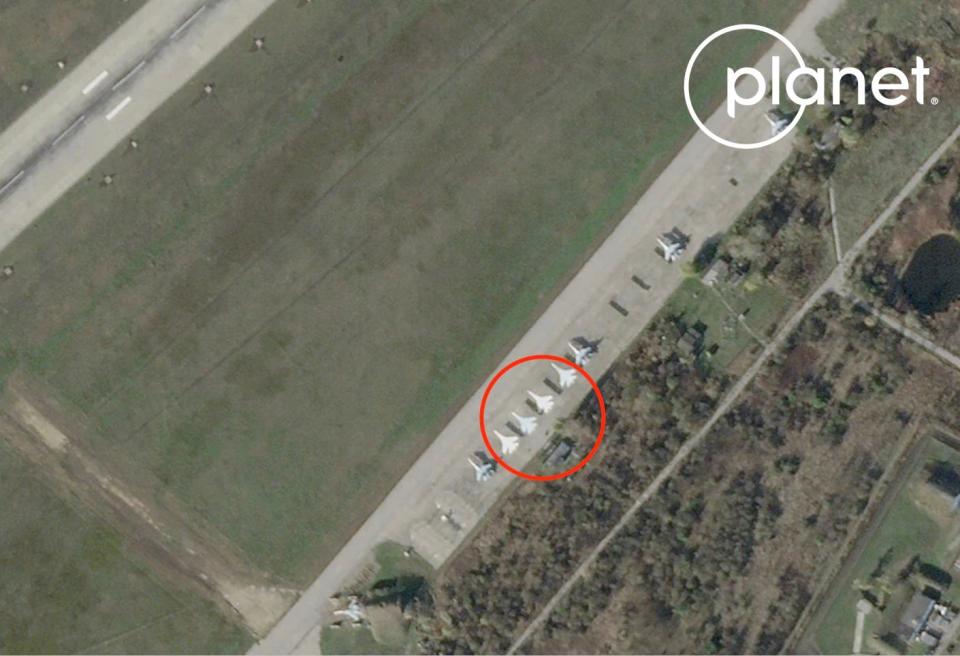
Over in Crimea, at the Gvardeyskoye Air Base in the center of the peninsula, a Dec. 5 satellite image shows the silhouettes of two fighter jets painted in a very light shade of gray, nearly blending in with the tarmac. Their noses resemble small, white dots. The silhouettes don't cast shadows, unlike nearby aircraft, and they aren't there in Aug. 23. imagery of the same base.
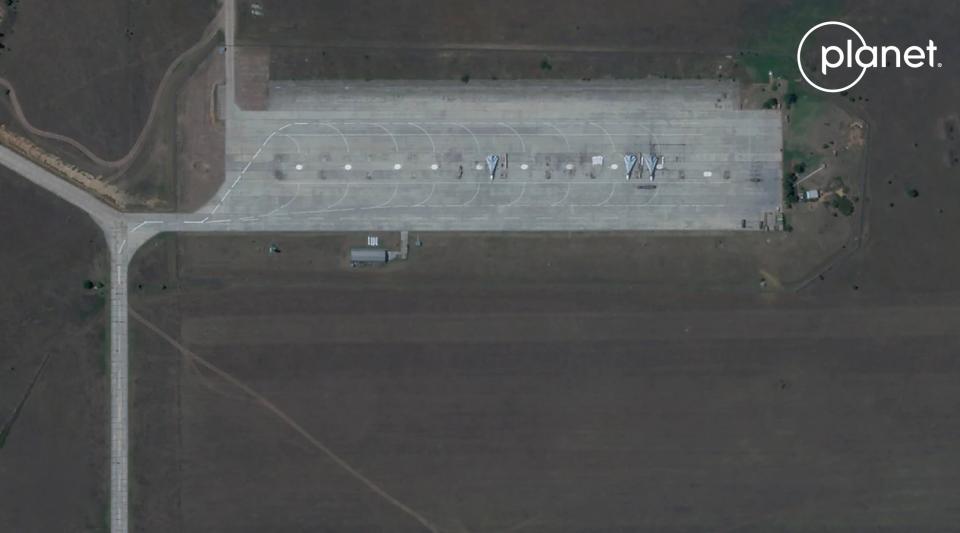
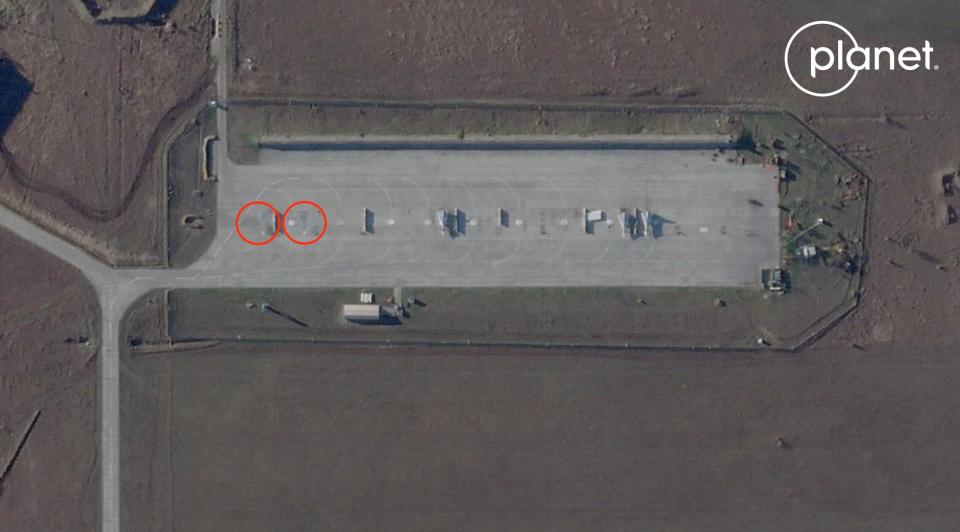
In the southwestern corner of Crimea, near the Black Sea port city of Sevastopol, an Oct. 26 image of the Belbek Air Base reveals four gray silhouettes of fighter jets that nearly blend in with the tarmac. The silhouettes don't give off any shadows, unlike the two other aircraft that are parked there, and they also don't appear in a photo captured of the same base on March 10.
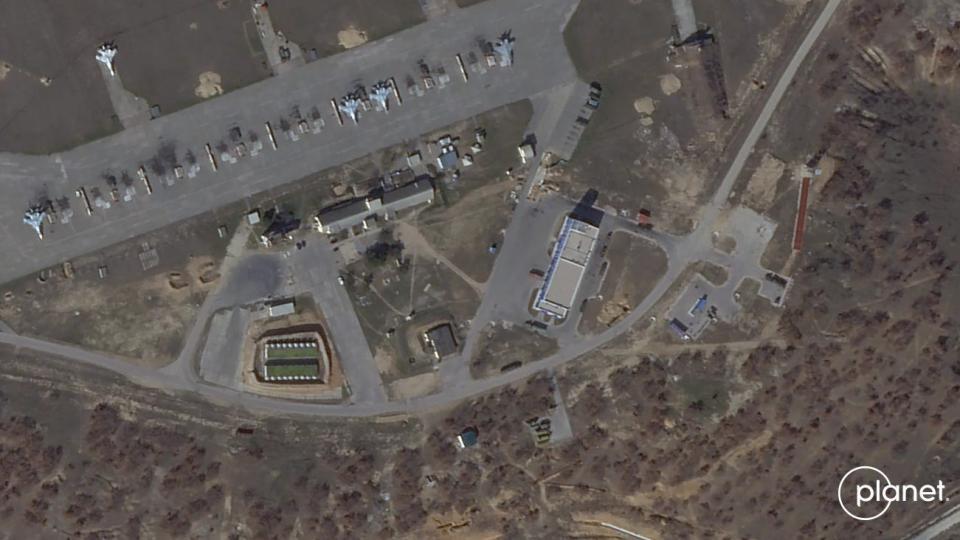
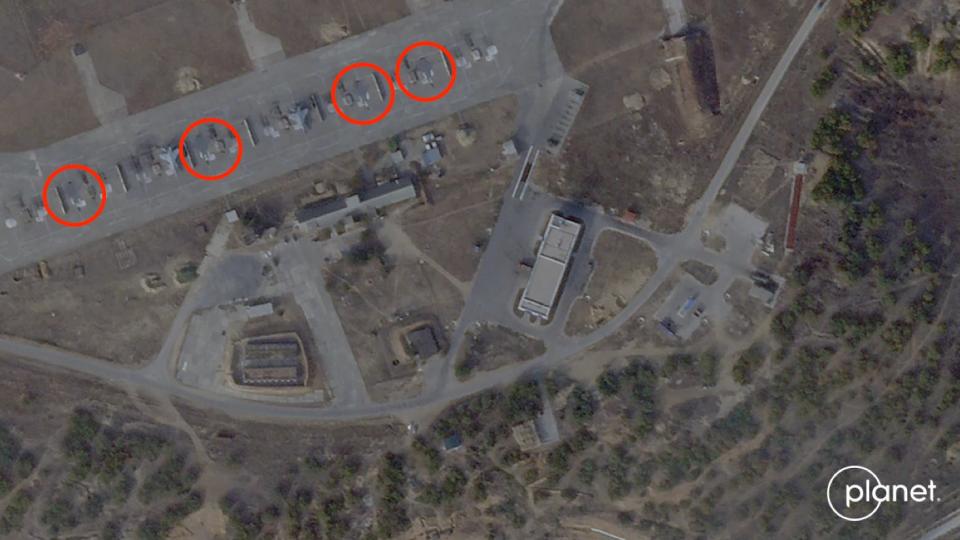
Analysts say this widespread tactic is an attempt by Russia to try and fool Ukrainian weaponry from hitting actual targets.
"These decoys are an attempt to mislead Ukrainian one-way attack drones that may rely on basic cameras to detect the outline of Russian aircraft," Brady Africk, an open-source-intelligence analyst at the American Enterprise Institute think tank, told Business Insider.
Africk has long tracked Russia's fake aircraft and shared a few examples of this tactic in a Jan. 30 thread posted to X, the platform formally known as Twitter. The presence of the decoys, he said, "indicates that Russia is concerned about Ukraine's ability to strike Russian military targets further and further from the front lines."
Indeed, as the war has progressed, Kyiv has increasingly managed to carry out long-range attacks with missiles and drones on Moscow's bases — whether that's deep inside Russia's sovereign territory or in occupied regions of Ukraine.
Africk said the use of deception and decoys has been "consistently present" throughout the war, with fake aircraft in particular being "prominent" on both Russian and Ukrainian airfields.
"We've seen several examples of munitions being used on decoy aircraft," he added. "So it's logical that Russia would create these decoys in an attempt to lead away Ukrainian one-way attack drones from real aircraft to fake ones."
But the creativity hasn't stopped at the airfields. Aside from its fake warplanes, Russia has also deployed inflatable T-72 tanks, while Ukraine, on the other hand, has rolled out rocket launchers made out of wood and oil barrels used to build decoy radar reflectors.
Read the original article on Business Insider


